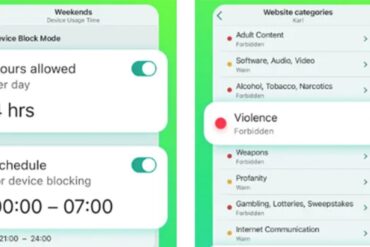“`html
The Goanna Guide for Parents: Understanding Your Child’s Scaly Friend
Hello, curious parents! Are you ready to embark on an exciting educational adventure with your children? Today, we’re going to explore the remarkable world of goannas—those intriguing reptiles that may capture your child’s imagination. Whether your family has spotted one in the wild, or your little explorer is simply fascinated by these scaly creatures, we’ve got you covered with fun facts and safety tips for the whole family!
What Are Goannas?
First things first, what exactly is a goanna? Goannas are large lizards belonging to the Varanus genus, which is part of the Varanidae family. They are often found in Australia, but their close relatives, the monitor lizards, roam across various continents. With their elongated bodies, sharp claws, and forked tongues, these reptiles can be an incredible sight in their natural habitat!
Goannas in the Wild: Where to Find Them
If you’re adventuring in Australia, you might be lucky enough to encounter a goanna in its natural environment. They’re quite versatile and can be found in a range of habitats including forests, savannas, and even deserts. However, it’s important to understand that these are wild animals, and they should be admired from a distance—safety first!
Different Types of Goannas
Did you know that there are over 25 species of goannas in Australia? They come in all shapes and sizes, from the smaller Rosenberg’s Goanna to the mighty Perentie, which can grow up to 2.5 meters long! Each species has its own unique characteristics that are fascinating to learn about.
Understanding Goanna Behavior
Observing goannas can be a real treat! They have some pretty interesting behaviors. For instance, they’re known to be excellent climbers and swimmers. However, when feeling threatened, they can become defensive. Teaching your children about goanna behavior is not only educational but can help ensure they respect these creatures’ boundaries, keeping everyone safe.
Goanna Tracks and Signs
Even if you don’t see a goanna up close, you might come across signs that one is nearby. Goannas leave distinctive tracks with their long tails and clawed feet. Encouraging your kids to be nature detectives and look for these signs can be an engaging outdoor activity. Plus, it’s a wonderful way to develop their observation skills!
As you delve into this guide, you and your children will learn so much more about the different types of goannas, their habits, and the right way to observe these remarkable reptiles in the wild. It’s an amazing opportunity to nurture a love for nature and wildlife in your kids. So grab your explorer hats, and let’s get ready to learn all about the majestic goanna!
“`

5 Essential Goanna Tips for Outdoor-Savvy Families
Hey there, awesome parents! Are you gearing up for a sun-soaked outing with the kiddos? If your family’s outdoor checklist includes spotting some of Australia’s most mesmerizing reptiles, then you’re in for a treat! Here are five golden nuggets of wisdom to ensure that your goanna-spotting adventure is marvelous, memorable, and most importantly, safe for everyone involved.
1. Suit Up for Safety
When setting out on your goanna quest, dress the part! Sturdy boots will protect you from unexpected encounters, and long pants and sleeves serve as armor against scratches or bites if you get a little too close. A hat and sunglasses will keep you comfy under the Aussie sun. Don’t forget the sunscreen – SPF is your BFF outdoors!
2. Know Your Goanna
Budding herpetologists and curious minds, unite! Before embarking, why not hold a mini crash-course on goannas? Learning about these reptiles together can be fascinating! Equip your little adventurers with knowledge about goanna habitats, diets, and behaviors. This way, they’ll know exactly what to look out for, and they’ll be prepared to respect our scaly pals from a safe distance.
3. Practice Patience and Observation
Spotting goannas often requires a sharp eye and a bit of luck. Teach the kiddos the art of observation. Move quietly, listen for rustles in the brush, and watch for movements along tree branches or across the ground. Goannas can be shy, so patience is key. Making a game of who can spot the most wildlife can keep the adventure engaging for everyone!
4. Leave No Trace
Goannas and other wildlife thrive when their homes are undisturbed. Teach your little ones the importance of “leave no trace” principles. Packing out trash, sticking to trails, and avoiding the temptation to feed wildlife are all part of being respectful visitors in nature. This approach not only protects the goannas but also preserves the environment for future family excursions!
5. Have an Exit Strategy
While goannas are generally reclusive, they can show defensive behavior if startled or cornered. Make sure your family knows what to do if a goanna feels threatened. Back away slowly and give it space to escape. It’s also wise to have a basic first aid kit and know the nearest location for medical assistance, just in case of any unexpected incidents.
So there you have it, fellow explorers! Five key pointers to ensure your goanna-gazing adventure is both safe and sensational. Get out there and enjoy the wonders of the Australian landscape, and who knows, you might just encounter one of these astonishing creatures along the way. Just remember to take only pictures, leave only footprints, and cherish the memories made with every step!
For more great fun click here. For more information see here
Disclaimer
The articles available via our website provide general information only and we strongly urge readers to exercise caution and conduct their own thorough research and fact-checking. The information presented should not be taken as absolute truth, and, to the maximum extent permitted by law, we will not be held liable for any inaccuracies or errors in the content. It is essential for individuals to independently verify and validate the information before making any decisions or taking any actions based on the articles.




